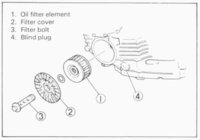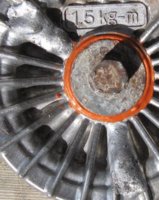robindean
XS400 Addict
The cover to my oil filter is bleeding a little bit. I'm not too concerned. My oil level remains strong for the duration.
However, I'd like to remedy the matter. I'm using FRAM filters. Perhaps their O-rings aren't up to snuff? Or, maybe the edge of the cover is marred?
Either way, I'm wondering if there's a spray on coating that can make O-rings behave better.
I'd also like to know if there's a sort of psuedo-sealer that I can line the filter cover with to keep the seal tight.
Help me out here, folks
However, I'd like to remedy the matter. I'm using FRAM filters. Perhaps their O-rings aren't up to snuff? Or, maybe the edge of the cover is marred?
Either way, I'm wondering if there's a spray on coating that can make O-rings behave better.
I'd also like to know if there's a sort of psuedo-sealer that I can line the filter cover with to keep the seal tight.
Help me out here, folks



 ).
).
